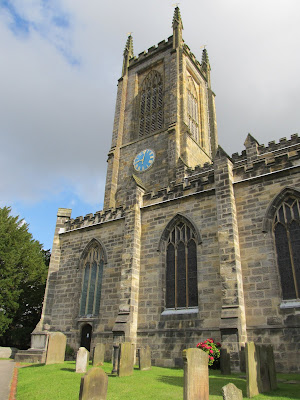Last Saturday whilst the family was otherwise occupied (decorating, camping at Redfest or driving a BMW for fun), I escaped from my job list for a spot of Geographing in East Grinstead.
According to The East Grinstead Society (http://www.eastgrinsteadsociety.org/) 'East Grinstead is a compact country town of historical interest surrounded by attractive countryside, with a population of about 23,000. Over 80 listed buildings exist within the town centred on a Conservation Area around the High Street. There are 16 ancient timber framed houses and two Grade I listed buildings'.
The day I vsisted London Road was shut for the town's annual Midsummer Market - although at the time I was there it was just being set up. I walked though the town to the east end of the High Street to see one of the two Grade I listed buildings - Sackville College. This is a Jacobean almshouse which was founded in 1609 with money left by Robert Sackville, 2nd Earl of Dorset. The college is built of Sussex sandstone around a quadrangle, the front(south face) of which can be seen from the High Street.
Whilst looking at the college I spotted a tower in the distance. A short walk around the back of the college revealed the Sackville Water Tower standing alongside a public car park. The Tower is a Grade II Listed building which has built in 1914 by W Vaux-Graham, an engineer for the Water Board. The square sandstone tower has angled turrets and one circular stair turret to the top floor which provided access around the tank up on to the roof level. The structure consists of a single void 16 metres high, reaching up to the base of the old tank. It is in the process of being converted into a family home by Elspeth Beard Architects.
I walked back to the High Street though the Lych gate of St Swithin's Church, the Parish Church of East Grinstead.
The church itself was built in 1789 to a design by architect James Wyatt. It replaced an earlier church which had fallen into dis-repair with its tower eventually collapsing after being struck by lightning in 1772. Unsusally for that period, the style is Gothic.
The tower was designed by J T Groves.
Back on the High Street and a chance to look at some of the fine old archiectture. The High Street was originally laid out in the early 13th century and served as a major road linking the South to London. It was deliberately wide to accommodate markets and fairs.
This is the view west along the High street towards Middle Row with Cromwell House in the distance.
Cromwell House (shown in more detail below) is a prestigious town house allegedly dating from 1599 and built by iron furnace owner, Edward Payne.
Dorset House gives the appearence of a Queen Anne style house of 1705 but is actually a reworking of earlier timberframed building, probably late C16.
Clarendon House is even older dating from around 1470 with additional extensions including the Old Stone House dating from around 1630.
On the south side of the High Street is a drinking fountain erected to celebrate Queen Victoria's Jubilee in 1887.
But just to prove all is not perfect in East Grinstead, at the other end of the town centre is this delightful cinima complex.....
....together with this run down , what Art Deco style building. This is actually the former Caffyn's Garage, built in 1936 but completly spoilt by the red tiles. It was due to be demolished but local people are fighting to save it.
An enjoyable couple of hours.
Subscribe to:
Post Comments (Atom)













And there's so much more! The town centre contains the longest run of medieval hall houses in the world, for example.
ReplyDelete